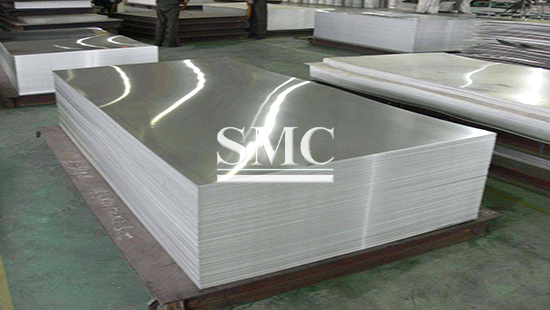
- Company overview The heart of SMC Vision & Philsophy Partnership Certifications Company culture
- Our service Design and Engineering Maintenance and Service Examine Production Line Upgrade and Transformation Storage and Logistics Processing, Trading and Distributor
- Management Our history Global responsibility Info Center
- Procurement center Internship
- Metal Steel Products Stainless Steel Products Aluminum Products Copper Products Galvanized Steel and PPGI Special Alloy Building Material
- Containers ISO Standard Container Equipment Container Storage Container Refrigerated/Reefer Container Offshore Container Container House Tank Container Container Fittings Container Trailer
- Gas Cylinder & Fire Extinguisher Cryogenic Liquid Cylinder Oxygen Gas Cylinder Storage Tank CNG Gas Cylinder LPG Gas Cylinder Hydrogen Gas Cylinder Nitrogen Gas Cylinder Industry Gas Cylinder Fire Extinguisher
- Metal Machinery Forming Machine Cutting Machine Processing Machine Bending Machine Block Machine Other Machinery Motor Spare Parts
- Mechanical Products Miscellany Mooring Equipment Marine Equipment Vehicle Industry Pressure Vessel Conveyor Belt Laser Equipment Bearing
- Electrical System Power Distribution Automation Electrical Cable Solar Power System Electric Protection System Transformer Production Line Lighting System
- Project Plastic Pipes and Pipe Fittings Fiberglass Reinforced Plastic Pontoon System
Processing Difference Between Aluminum Veneer and Aluminum-plastic Board
The structure of aluminum veneer is mainly composed of panels, stiffeners and corner codes. Forming * Large workpiece size can reach 8000mm × 1800mm (L × W)
Aluminum veneer specifications:
Conventional thickness: 1.5mm, 2.0mm, 2.5mm, 3.0mm
Common specifications: 600 * 600mm
1. Light weight, good rigidity, high strength 3.0mm thick aluminum plate weighs 8kg per square plate, tensile strength
Good durability and corrosion resistance, good processability. Adopting the first processing and then spray painting process, the aluminum plate can be processed into a variety of complex geometric shapes such as planes, arcs and spheres, with uniform coating and various colors. The advanced electrostatic spraying technology makes the paint and aluminum plate adhere uniformly, with various colors, large selection space, not easy to stain, and easy to clean and maintain. The non-adhesiveness of the fluorine coating film makes it difficult to attach pollutants to the surface, and it has good cleanliness and convenient and quick installation and construction. The aluminum plate is formed in the factory, there is no need to cut it at the construction site, it can be fixed on the frame, it can be recycled and reused, which is beneficial to the environment. Aluminium sheet can be 100% recycled. Unlike glass, stone, ceramics, aluminum-plastic panels and other decorative materials, the residual value of recycling is high.
Comparison of aluminum veneer and aluminum-plastic board:
Aluminum veneer generally uses 2-4mm thick AA1100 pure aluminum plate or AA3003 aluminum alloy plate, and 2.5mm thick AA3003 aluminum alloy plate is generally used in China; aluminum-plastic composite plate generally uses 3-4mm three-layer structure, including two 0 .5mm sandwiched with PVC or PE. We can see from the materials that the cost of aluminum-plastic composite board is definitely much lower than that of aluminum veneer.

Processing process:
At present, there are two types of aluminum veneer in the world: fluorocarbon sprayed aluminum veneer and roller coating. The production of aluminum veneer by spraying is divided into two major steps:
The first is sheet metal processing. This process is mainly through cutting, folding, arcing, welding, and grinding the flat plate to process the aluminum veneer into the shape and size required for construction.
The second is spraying. Spraying is spraying paint on the processed sheet metal. There are two types of spraying, one is manual spraying and the other is machine spraying. Machine spraying is generally only suitable for regular flat plates, but this aluminum veneer is rarely used in actual use. Manual spraying is a dangerous job, because the paint is relatively volatile and toxic, which can easily cause chronic benzene series. Poisoning seriously affects human health. One of the great advantages of manual spraying is that the color can be selected regardless of the amount, and the roller coating of aluminum-plastic board must reach a certain amount before it can be processed. The processing of aluminum-plastic board is more complicated than that of aluminum veneer. There are four major processes: chemical conversion, painting, compounding and trimming. These four processes are automated production except trimming. From its processing process, it can be seen that aluminum-plastic panels have certain advantages in terms of environmental protection and safety. Coupled with the simple sheet metal adding process of aluminum veneer, some private workshops have also begun to get involved, which has seriously affected the stability of the market quality of aluminum veneer.
Performance cost:
The appearance of aluminum veneer is worse than aluminum-plastic board, but its mechanical properties are obviously better than aluminum-plastic board, and its wind resistance is also better than aluminum-plastic board.
Fire-resistant aluminum veneer is non-combustible. Early aluminum-plastic panels were not able to fire. However, with the development of aluminum-plastic panels, the fire-resistant aluminum-plastic composite panels produced now are non-toxic and flame-retardant due to the addition of PE to their Materials and fire resistance have been greatly improved, which can fully meet the needs of engineering fire protection.
The residual value aluminum veneer has a certain residual value, but because of its high cost, the waste caused by the aluminum-plastic composite plate has almost no residual value. To sum up the above analysis, aluminum veneer and aluminum-plastic composite board have their advantages, but from a large perspective, the application of aluminum-plastic board should look more affordable and environmentally friendly.
For more information, please visit: https://shanghaimetal.com/aluminum_composite_panel-591.htm
For our full list of products that we offer check out our website here. Be sure to join the conversation in our LinkedIn group, Facebook, Twitter.
Try also our We Chat by scanning the QR code below.
Fever L.//SMC Editor

